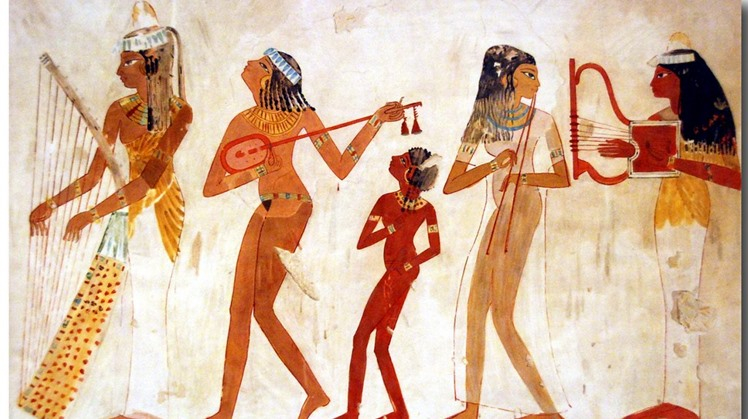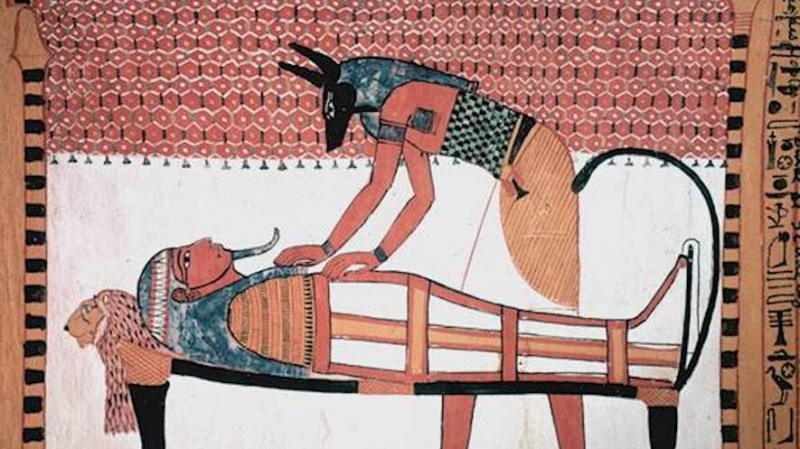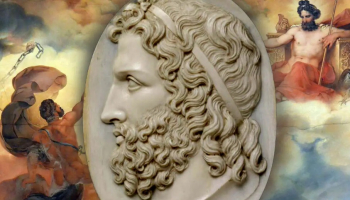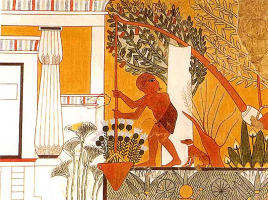Top 9 Most Famous Ancient Egyptian Paintings
As the world's oldest civilization, ancient Egypt is known for its brilliant literary and artistic life, the most attractive are the most famous ancient ... read more...Egyptian paintings showing the pinnacle of wisdom. ancient wisdom. Below is a list of the most famous paintings of ancient Egypt that are likened to stone sculptures and contain unique and outstanding features. Let's discover with Toplist!
-
When listing the list of the most famous ancient Egyptian paintings, it is impossible not to mention Egyptian Dance paintings. Dance played an important role in the culture of the ancient Egyptians. Music and dance are standard. A rhythmic dance was imprinted on the heart of the Egyptians, with people often working to the sound of songs and percussion instruments. The era of Ancient Egypt also saw the birth of street dancers who would delight passersby. Egyptian dance is divided into various genres depending on the participants and the occasion.
In particular, Egyptian Dance paintings show “dancing in pairs” in which two women dance together in a pair while another group plays music. Pair dance involves two men or two women dancing together. There are also collective dances where a group of trained performers will keep the audience entertained, but the most common are carnival dances with each dance unique to its particular celebration. In Egypt about 5,000 years ago, they created dances that were performed in rituals such as dancing to welcome kings, praising the gods or seeing off the dead, and even singing and dancing for the gods. daily leisure activities. The dances are often designed to perform quite sophisticatedly, in accordance with the rhythm. Because singing and dancing an important parts, helping to create joy in daily life, so not only in festivals but also in ordinary activities such as farming, raising livestock, and hunting the ancient Egyptians as well. often have very rhythmic and flexible labor movements.

Source: egyptfwd.org 
Source: egypteverafter.com -
The Egyptian pharaoh Tutankhamun is perhaps one of the most well-documented and famous of the Egyptian pharaohs. Since the discovery of his almost intact tomb in 1922, Tutankhamun, more commonly known as King Tut, has received unprecedented media coverage and frequent appearances in popular culture. Cartouche of Tutankhamun also became the most famous ancient Egyptian painting. King Tut's drawings in paintings depict many events including the time of his birth. The cartridge case is an oval hieroglyph with a horizontal line at one end indicating that the text in it is related to royalties. Drawing of King Tut showing his birth name and throne. Two paintings can be seen between fierce lioness warriors Sekhmet depicted crushing some ethnic enemies while the vulture goddess Nekhbet flies protectively overhead.
Each Egyptian Pharaoh had their name written in hieroglyphs, and each Pharaoh's name had a special meaning. Through the Cartouche of Tutankhamun, it can be learned that Tutankhamun is named after God, Amun (King of the Gods) and that his name is actually three words. Tut-ANKH-AMUN, which means "living image of Amun". King Tut's name in hieroglyphs is depicted using a reed, a water wave, a falcon, an Ankh (symbol of the Pharaohs), and a series of staff/shields. King Tut's name in hieroglyphs has been found to represent all of his tombs, from the walls of the tomb to his gold jewelry and his sarcophagus.

Source: topancienthistory.com 
Source: topancienthistory.com -
Ramesses was one of the greatest pharaohs to ever reign in ancient Egypt. During his reign of over 66 years, he led a number of military expeditions that expanded Egypt's territory and gained strongholds over an impressively wide area from the Nile Delta to the burning deserts. His reign saw many major historical events and campaigns that are well documented in many statues, paintings, and other artifacts from that era. Among them, the Siege of Dapur is one of the most famous ancient Egyptian paintings. The image commemorates the siege of Dapur that took place in 1269 BC. Pharaoh Ramesses II is drawn larger than the rest indicating his immortal nature. The paintings also depict Ramesses' sons participating in the Siege. The siege took place with the support of ladders, chariots, and soldiers.
The Siege of Dapur, found in one of the pharaoh's tombs, shows the Egyptian king's raid against the resurgent Hittite forces of Muwatalli, the entire battle going on in present-day Syria. To fend off a formidable and much stronger enemy, Ramesses' forces outnumbered and were caught in an ambush, but somehow the pharaoh fought the battle to a stalemate and returned home one day. hero. There is a relief depicting the siege in the Ramesseum museum named after Ramesses II. The Siege of Dapur remains one of ancient Egypt's most glorious moments and deserves a colorful splash.

Source: egypttoday.com 
Source: egyptindependent.com -
Egyptian Deities paintings represent an ancient Egyptian social civilization that had a complex polytheistic belief system, meaning that the Egyptians believed in and worshiped many gods. More often than not, these deities are grouped in a shrine along with their religions and rituals. This gives them a deep historical value, making these paintings the most famous ancient Egyptian paintings. The entire civilization is rich with diverse religions, each with its own gods, rituals, and beliefs, and they have many loyal followers. It is said that different cities have different gods that characterize them and that the devotees worship their individual gods with reverence.
Egyptian Deities paintings often represent the highest deities. The most famous of the gods were the sun god Ra; Anubis, god of death and mummification; and Horus, god of the sky. Among them, Osiris, Anubis, and Horus were very important in the ancient Egyptian gods. Egyptian Deities paintings are the most famous and are present in almost every house of the ancient Egyptians. In addition, the most popular paintings that have been made include that of the first goddess, Mesh Kent or Mesh Canet, the goddess of childbirth. In particular, to the ancient Egyptians, kings were also gods. That's why everyone worships them, kings or queens have statues in each grave in the valley. One of the most depicted pharaohs is King Ramesses the Great. He was the greatest king of ancient Egypt, he successfully carried out many expansions and built a stronghold from the Nile Delta to the remote deserts.

Source: timelessmyths.com 
Source: timelessmyths.com -
Funerary paintings show that the ancient Egyptians were obsessed with the idea of an afterlife, which is why this painting is on the list of most famous ancient Egyptian paintings. The ancient Egyptian's concept of the journey was of primary importance. It was believed that the gods would come to the funeral and decide whether the dead would be resurrected in their afterlife. A person is said to go to his afterlife if he has a heart free of sins in his past life. The painting depicts how the funeral process took place and how the ancient Egyptians used to bury the dead.
At a time when the concept of the afterlife was extremely important in Egyptian religion and ritual, the practice of funerals had a high place in Egyptian society. When a person dies, it is at the burial place where the gods will decide whether the dead person has a chance to be resurrected in the afterlife. Getting to one's afterlife is a difficult task, requiring a sinless heart and the ability to recite mantras and passwords from the Book of the Dead. As clearly depicted in the Funerary paintings, the deceased's heart will be weighed down with the Thuc feather of truth and justice, taken from the hat of the goddess Ma'at. If the heart is lighter than the feather, it can pass, but if it is heavier, it will be devoured by the demon Ammut.

Source: aucegypt.edu 
Source: aucegypt.edu -
The religion of the ancient Egyptians was based on a firm belief in the afterlife. Instead of a complete cessation of life, death is seen as a temporary interruption. They strongly believe that eternal life can happen through the means of piety and mummification. Therefore, the Egyptian Afterlife became one of the most famous ancient Egyptian paintings. It was assumed that an individual's afterlife would be determined by the Egyptian gods, as clearly depicted in the picture above. The pharaohs were staunch believers in the idea of an afterlife, and for that reason they often prepared for their funerals, making sure that every arrangement was made to ensure they had what they needed when they come back to life.
The Egyptian Afterlife is an afterlife-related painting that shows how the dead gain immortality and continue their life after death and this must be painted for the sake of expression. The ancient Egyptians had different interpretations and ideas about religious concepts, mainly about the afterlife. Certain traditional beliefs are certainly more common in some places and periods than others. The afterlife could mean living among the gods, the sun, and the stars in the sky. This idea was especially popular among kings but was extended to more people over time. In the version of the afterlife, a person can live among the stars, and hang out with the moon.

Source: awaken.com 
Source: thelancet.com -
Those who have seen the pop culture movie The Mummy will know that the Book of the Dead is not only the most famous ancient Egyptian painting but also an ancient scripture containing texts on how to bring the dead back to the afterlife. that. Book of the Dead includes several magical spells that are said to be used to aid a dead person's journey through the underworld after they die and are resurrected to the afterlife. The earliest incantations and manuscripts dating from 3000 BC, and newer spells were added later in Egyptian history, most recently between the 11th and 7th centuries. B.C.
After being mummified, they will embark on a long and perilous journey to an eternal paradise. But to get there, they need a guide with magical spells dubbed the book of the dead. The Book of the Dead is a guide and collection of spells written in hieroglyphs with color illustrations. This guidebook has helped the person towards the journey of the afterlife. Spells are guided and embellished with beautiful and simple visualizations to avoid danger and harm from the powers of the gods. The presence of familiar gardens, houses, animals, boats, family members, clothing, and food has given viewers of these most famous paintings understanding, comfort, and erudite.

Source: metmuseum.org 
Source: metmuseum.org -
Mummification is an important part of the concept of the afterlife. A proper ritual must be followed to embalm a dead person to ensure that he or she comes back to life after receiving judgment from the Egyptian gods. Before the Old Kingdom (earliest Egyptian civilization), bodies buried in the desert were naturally preserved by desiccation. But as time went on, the wealthier Egyptians began to arrange for more elaborate artificial embalming. Therefore, Mummification deserves to be on the list of most famous ancient Egyptian paintings to keep for thousands of generations.
By the time of the New Kingdom, people had perfected the art of mummification. The best of these techniques takes nearly 70 days and involves preserving internal organs, including the brain, and dehumidifying the body in a salt mixture called natron. The corpse was brought to the embalmer, the masked Uba, the Egyptian god of mummification and the afterlife. The body was cleaned and removed from the liver, lungs, stomach, and intestines for separate embalming. Through the Mummification paintings, it can be seen that they used to put those parts in separate boxes called canopic jars. The brain was deemed useless and was removed from the skull with a metal hook. The heart that was once removed from the body was wrapped in linen and was once again replaced in the ribcage.

Source: pinterest.com 
Source: worldatlas.com -
The Egyptians made the most beautiful and elaborate tombs for their pharaohs called Tomb paintings - one of the most famous ancient Egyptian paintings. In fact, Ancient Egypt boasts the most remarkable memorial tombs, most of which still stand today: the pyramids. There are several famous pyramid tombs, notably three massive tombs from the Fourth Dynasty. But most spectacular are the paintings carved within them, often depicting the deceased's journey to the afterlife. Tomb paintings often show the deceased with family members, mainly the person's wife, mother, and daughter. Scenes of activities and ceremonies are also included.
Tomb paintings in Irinefer's tomb depict the dead standing on the barge of the phoenix, the symbol of the sun god Heliopolis. Most of the tombs have some paintings that reflect the lives of the deceased, and the royal tombs are even more vividly carved with paintings and petroglyphs that reflect their journeys. before dying and then to the afterlife. Feminine beauty is a significant feature we see in these tomb paintings. Even female mourners are depicted with attractive beauty as part of Egyptian artwork. These paintings were made on the walls of the tombs of the rich to create a beautiful afterlife for the deceased. The side of the person is painted in a variety of colors including red, green, black, and yellow.

Source: history.com 
Source: pinterest.com






























